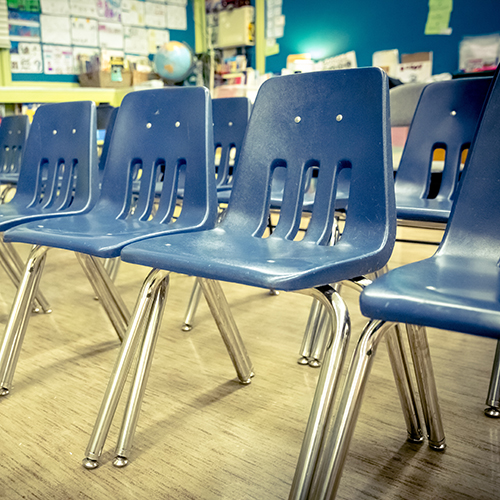While the end of summer is an exciting time for kids, parents, and educators, it is also a time for an increased risk of illness or injury as students head back to school. According to the Centers for Disease Control (CDC), more than half of students (ages 5-17) miss 1-5 school days each year due to illness or injury. Studies show that students with more absences have lower scores on national standardized tests. In short, attendance is a key indicator of student academic achievement.To reduce illness, schools may use cleaning products called “antimicrobials” to kill germs like bacteria and viruses. Antimicrobials play an important role in protecting public health by helping to keep people well enough to work, lowering school absences, and reducing indoor allergens. However, antimicrobials also contain chemicals that may cause serious health problems if used in the wrong way or in the wrong amounts. There are two types of commonly used antimicrobials:
- Sanitizers are the weakest antimicrobials available to the public. Some are used to reduce bacteria on surfaces that touch food, while others should only be used for non-food contact surfaces. Always read the label to find out how to safely and properly use any sanitizer.
- Disinfectants kill or prevent the growth of bacteria and fungi. Some also target specific viruses. They are the most commonly used antimicrobial in medical settings, and are also used in residential settings to disinfect household surfaces. Disinfectants should never be used on surfaces that come into contact with food.
Children are especially sensitive to cleaning chemicals like antimicrobials. Cleaning substances that don’t cause harm to adults can still be harmful to students. Natural curiosity increases the chances of a child coming into contact with hazardous chemicals. These scenarios include:
- Licking surfaces or placing hands or objects in their mouth
- Breathing in toxic vapors or fumes
- Absorbing chemical residues through the skin
- Rubbing eyes after touching treated surfaces
- Common cleaners and disinfectants
- Alcohol-based hand sanitizers
- Bug sprays and insect repellents
ADDITIONAL TIPSAmerica's Poison Centers and the National Pesticide Information Center (NPIC) offer a few simple steps to help prevent poisonings at daycare and school:Store cleaning products and chemicals up, away, and out of sight of children, and in their original containers. Remember some cleaning products, like bleach and ammonia, can create highly toxic fumes when combined. NEVER mix cleaning chemicals!Read and follow label instructions. Make a habit of reviewing the label on any chemical or product before each use. Follow usage directions, and the directions provided for safe storage and disposal. For antimicrobials to be effective, the surface must stay wet for the amount of time listed on the label. Call NPIC at (800) 858-7378 if you have any questions about the product and the directions.Be prepared for an emergency. Contact Poison Help immediately at 1-800-222-1222 if you suspect that a student or staff has been accidentally exposed to a dangerous substance, or is showing symptoms. Seeking the medical expertise of a poison center specialist could be lifesaving.The best way for teachers and caregivers to be prepared in the event of any poisoning emergency is to save the contact information for poison centers into their smartphones simply by texting “POISON” to 301-597-7137. Also, make sure to display the contact information for poison centers throughout your daycare or school, in case of emergency.
| |
SCHOOL RESOURCES
MORE RESOURCES
|
/APC%20logo_2C%20with%20tagline.jpg)
 DAYCARE & SCHOOL SAFETY
DAYCARE & SCHOOL SAFETY